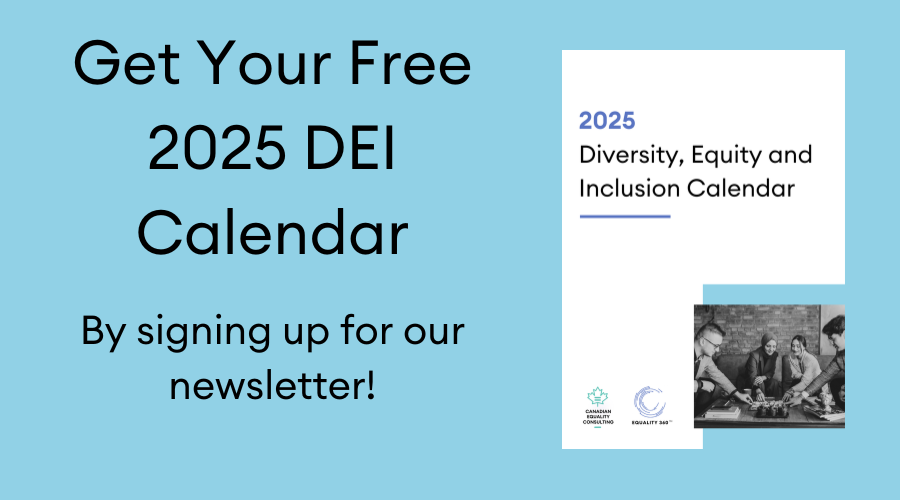
Gender-Based Analysis Plus (GBA Plus) Blog Series (Part 1)
Gender-based Analysis Plus (formerly known as GBA+, now GBA Plus) is an analytical process created by the Government of Canada to explore the changing realities and inequalities of diverse groups of people. According to Women and Gender Equality Canada, GBA Plus is a “means to assess how diverse groups of women, men, and gender diverse people may experience policies, programs and initiatives. The “plus” in GBA+ acknowledges that GBA Plus is not just about differences between biological (sexes) and socio-cultural (genders). We all have multiple characteristics that intersect and contribute to who we are. GBA Plus considers many other identity factors such as race, ethnicity, religion, age, and mental or physical disability, and how the interaction between these factors influences the way we might experience government policies and initiatives.”
What does that look like in practice? GBA Plus gives tools to organizational experts to ask, “How does a part-time employee who is a woman of colour experience the workplace differently from a full-time employee who is a man with a disability?” Or “How does this project differently impact a gay man in comparison to a straight woman?” GBA Plus allows us to acknowledge the impact that different identity factors, such as gender, ability, sexual orientation, income, race, and culture, have on the way individuals experience the world. People are complex and view the world through different lenses, and GBA Plus is a way to break this complexity down more easily.
GBA Plus is also the result of a long legacy of the Government of Canada discussing the best means to include diversity, equity, and inclusion (DEI) frameworks in the government’s work. For instance, the “+” was added in 2011 to the former framework of GBA in order to add consideration of multiple factors that shape experiences, identities, and outcomes, beyond sex and gender. This same period is also when the mainstreaming of GBA Plus and sharing of best practices between departments began. The first-ever full Minister of Women and Gender Equality Canada was appointed in November 2015, and the requirement for GBA Plus in Memoranda to Cabinet and Treasury Board Submissions was established under the GBA Plus Action Plan 2016-2020. The Government tabled the first-ever gender-based assessment of budgetary measures in Budget 2017, and progress has continued since this point.
While organizations are often more inclusive than in the past, progress remains to be made. As of 2018, less than 6% of all Fortune 100 board seats were filled by women of colour, while white men continue to dominate, occupying 60% of board seats. Additionally, fewer than 15 Fortune 100 companies have executive-level management that is comprised of one-third or more of non-white executives. GBA Plus presents a more holistic approach to examining why these disparities still exist, and avoid siloing of Diversity, Equity, and Inclusion (DEI) efforts.
GBA Plus is a useful tool that will also benefit your organization. Here are some quick reasons why diversity and inclusion matters in the workplace:
- Demonstrating to your clients that your organization understands the multifaceted and interlinked nature of discrimination
- Creating an internal culture of inclusion and shared feelings of representation
- Ensuring that all staff can be fully productive in the workplace through support targeted to their specific needs
- Promoting equality and diversity in the workplace and in hiring practices
- Avoiding tokenism and exclusionism
See the benefits already? Then join us as we examine:
- What is Gender-inclusive language?
- What are the benefits of Gender Based Analysis Plus (GBA+/GBA Plus)?
- Tools for incorporating GBA Plus in your workplace
In part two of this series, we will explore the following:
- Examples of GBA Plus
- What is intersectionality?
- Who in your organization is responsible for applying GBA Plus?
- CEC GBA Plus Services
What is Gender-inclusive language?

One of the key ways that the GBA Plus toolkit helps support diversity, equity, and inclusion efforts (DEI) is through encouraging use of gender-inclusive language.
Gender-neutral language is language in programs and policies that are free of explicit or implicit reference to gender and sex. This is a useful approach to ensuring that any clients or recipients of the products do not feel alienated by the language utilized.
Complementing gender-neutral language, is gender-inclusive language, which aims to be inclusive of the various identities of all clients who may be reading your products. Unlike gender-neutral language, gender-inclusive language recognizes that sometimes gender and identity need to be recognized in communication, and there are inclusive ways to do so. This approach ensures that any clients or recipients of your products feel represented by the language utilized. Some simple examples of gender-inclusive language may include using “people” or “folks” when addressing an audience, instead of “ladies and gentlemen” or “guys”; “parent” instead of “mother” or “father;” “firefighter” or “flight attendant” instead of “fireman” or “air hostess.” In addition to the terms used, it is important to ensure that gender-biased expressions or expressions that reinforce gender stereotypes are avoided. As your organization shifts to more inclusive language, there are resources available to broaden your working vocabulary.
Why is this important? Gender-inclusive language ensures that everyone feels included and that non-discriminatory language is always utilized. When someone has spent their life being excluded from aspects of society, an unintentional turn of phrase can make them feel unsafe, unwelcome, or alienated. In the workplace, it is particularly important to ensure a positive culture where all staffers are included, meaning that the language utilized should be deliberately inclusive. There are a number of guidelines available online to ensure that your organization has best practices on ensuring inclusive language.
What are the benefits of Gender-Based Analysis Plus (GBA+/GBA Plus)?
GBA Plus involves the “analysis of the context within which people live, including structural or systemic conditions that might create barriers for some, as well as opportunities for others. GBA Plus involves critical consideration of the historical, social, and political contexts and the systems of power, privilege, discrimination and oppression that create inequities as well as applying a meaningful approach to address them.”
Because of this, GBA Plus is a tool to consider all the intersecting identity factors that may impact your work in order to ensure that you can be more inclusive in your approach to developing, delivering, and evaluating initiatives. Without using GBA Plus or a similar framework, we run the risk of missing, excluding, or misunderstanding the experiences of the client, or creating products that accidentally increase inequalities. Having an intersectional analysis of projects and their impact allows an organization to maximize effectiveness.
GBA Plus gives organizations a tool to look at how different factors, for instance income, culture, or language, influence how people interact with your product. For instance, someone with a disability might interact with your work differently than someone without. A parent may need to prioritize childcare before coming to your workplace, or a young person might have a different relationship to your work than someone older. Having the ability to consider all of these implications can make your work more impactful. Additionally, collecting data and analytics organized along these identity factors, as opposed to only collecting homogenized data, can lead to a better-informed workplace.
Tools for incorporating GBA Plus in your workplace
There are many tools available to help you incorporate GBA Plus in your workplace, created by both the Government of Canada and the non-profit sector. When incorporating GBA Plus practices into your organization, the Government of Canada recommends:
- Prioritizing an intersectional, integrated, and systematic approach, from planning through to evaluation, at all levels of the organization.
- Ensuring that your GBA Plus approach is evidence-based and relies on research, statistics, and disaggregated data, as well as long-term monitoring.
- Challenge your organization and staff’s existing assumptions on social norms and re-evaluate any assumptions or biases.

GBA Plus job aid diagram on how begin the GBA Plus analysis process.
Some of the tools that you can access include:
- GBA Plus Toolkit: One of the primary resources that your organization can use is the Government of Canada’s GBA Plus Toolkit, which includes information on the business case for using GBA Plus in your work, an overview of GBA Plus, and case studies of application.
- Model accessibility strategies: When designing strategies and programs under a GBA Plus framework, it is important to be accessible of different identities. While this may seem daunting at first, many models, strategies, and best practices exist online to use as resources when building your organization’s own strategies.
- Glossaries of diverse terminology: As you begin adopting a GBA Plus framework in your organization, updating your organization’s terminology to be more inclusive and strategic will support the achievement of your DEI objectives.
- Canada School of Public Service GBA Plus Course: This publicly available course provides a basic introduction to GBA Plus, including key concepts and understanding how the framework can be implemented in practice.
- GBA Plus Microlearning Videos: The Government of Canada has created a number of useful videos on various topics related to GBA Plus and DEI that are publicly accessible.
Interested in learning more on workplace diversity and inclusion training in Canada? Canadian Equality Consulting offers diversity and inclusion consulting and would love to work with you to increase diversity in the workplace. Contact us to begin a discussion on how to make your workplace more responsive to the needs of your diverse employees.

